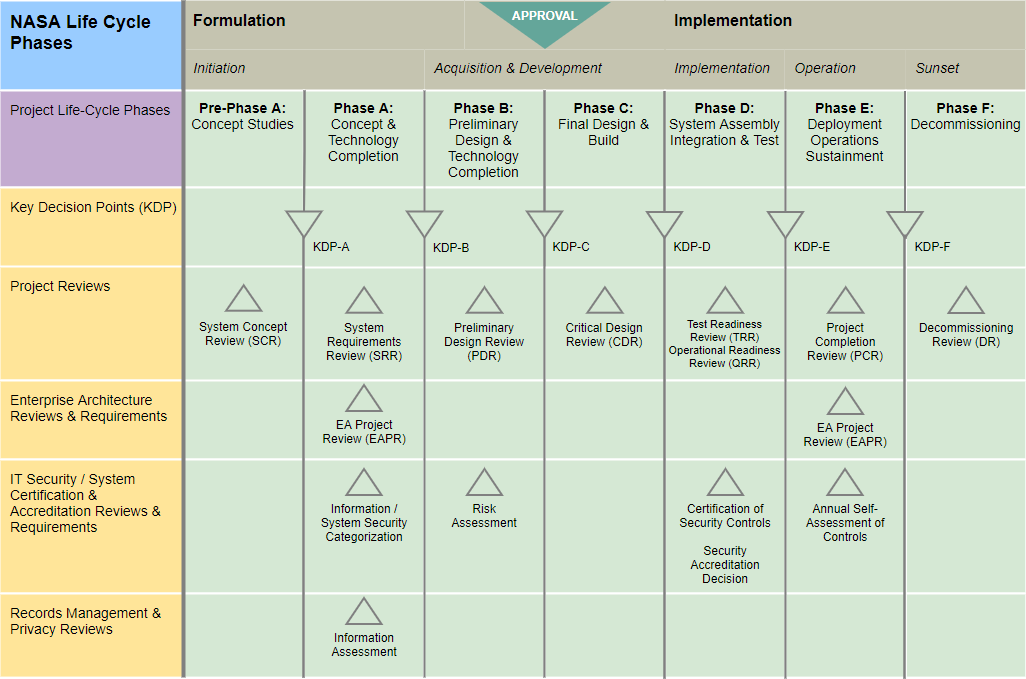NASA lifecycle phases are used to help plan and manage all major aerospace system developments. Everything that should be done to accomplish a project is divided into distinct phases, separated by control gates that have to be passed to proceed.
The project life-cycle phases of formulation and implementation are divided into incremental pieces. This allows the development team to access their progress, estimate system and project performance, plan the next phase and allows decision-makers to assess management and technical progress. For NASA project lifecycle the phases are lettered as following:
- Pre-Phase A – To produce a broad spectrum of ideas and alternatives for missions from which new projects can be selected.
- Phase A – To determine the feasibility of a suggested new system in preparation for seeking funding.
- Phase B – To define the project in enough detail to establish an initial baseline capable of meeting mission needs
- Phase C – To design a system (and its associated subsystems, including its operations systems) so that it will be able to meet its requirements.
- Phase D – To build the subsystems (including operations systems) and integrate them to create the system, while developing confidence that it will be able to meet the systems requirements.
- Phase E – To ensure that the certified system is ready for operations.
- Phase F – To dispose of the system in a responsible manner.
We need to decompose the project into life cycle phases organizes the development process into smaller more manageable pieces. Since early decisions commit later activities and more mature systems are harder to change, systems engineering done in the early phases has the greatest impact on mission success.

Edit this NASA project lifecycle example
Phase boundaries are defined at natural points for project progress assessment and go/no go decisions, we need to review by asking some questions:
- Should a project continue to the next phase?
- Redo some current phase work, or be terminated?